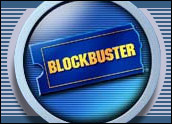
The year-long U.S. recession hasn’t brought spending on advertising to a screeching halt, but it has forced a shift in the way advertisers engage their audiences.
With marketing budgets shrinking by the day, advertisers are turning to the Internet as an alternative to more traditional media such as television, radio and print advertising.
The reason? The results of online ad campaigns are much more measurable than other forms of advertising.
“All media on the Internet is pretty measurable in terms of what people are doing with it, especially online video,” said Andrew Frank, an analyst with Gartner. “With video, you can measure how many people watched, who they were and what they did before and after they watched.”
The same is especially true for search advertising — the same form of online advertising that has turned search engine giant Google into an Internet powerhouse.
All that said, advertisers can’t rely solely on the Internet to reach their audiences. At least that’s what the marketing experts say. Instead, businesses need to come up with the right mix of Internet, television, print and radio. The problem is, there is no one template that fits all — and none guarantee success.
Don’t Stop Advertising
Here are three pieces of advice from Seattle-based advertising executive John Rubino about the right way to advertise during a recession:
- Don’t stop advertising. “What you tend to see in bad economies is the knee-jerk reaction to stop spending on advertising,” Rubino, president of GreenRubino, told the E-Commerce Times. “The savvy businesses are the ones that look at a recession as an opportunity to have your share of the voice multiplied because less people are marketing at that time.”
Another advantage is that businesses can pay less for advertising during a recession because there’s less demand for it.
- Know your target audience. “You have to know what impact the economy is having on your target audience. Then, evaluate the creative and the media mix,” Rubino said.
In other words, find out where to best reach your targets and whether that’s changed over time or is in the middle of changing as you do research. Then, decide whether to hit them with search advertising, display advertising, print or TV, he said.
- Measure and optimize. “Measure the impact you’re having with your campaigns and optimize your campaigns based on what you find,” Rubino said.
There are cost-effective ways to do quantitative online research. Businesses need to decide who their audience is, get members to participate in a survey or some other form of research, and then ask a series of questions that can be benchmarked before, during and after an advertising campaign, he said.
Lines Have Blurred
One thing is clear: Companies can’t advertise on the Internet just to save a few bucks.
Though often criticized for being slow to grasp new concepts and market realities, the automotive industry has often been at the forefront of advertising.
Ford Motor has made a habit of using the latest and greatest Internet technologies for the purposes of advertising.
“On average, the digital mix has been increasing the last few years,” said David Sanabria, SUV marketing communications manager for Ford. “However, there’s a blurring of the lines between what we call traditional advertising and digital advertising.”
Case in point: During the Grammy Awards on CBS earlier this month, Ford ran five 30-second spots that were created as part of an online competition that brought together emerging musicians with aspiring writers and directors to create online videos.
“It all came together,” Sanabria told the E-Commerce Times. “Ford combined Internet advertising with television advertising. You saw it online and on TV. It’s not enough to think you can just spend on digital advertising and not consider how the audience will consume it via other media.”
Only the Creative Need Apply
Despite the vast amount of quantifiable data out there, advertisers still need to be creative in the way they approach consumers.
“The advertising days of “Mad Men” were about who could come up with the best big idea,” Gartner’s Frank said. “Now, we have a lot more data, but that doesn’t negate the need for creative ideas. So, boiling it down, I’d say you have to get your creative agency and your quantitative analysts together to do optimization.”
An effort by Ford earlier this year to promote its new 2009 F150 truck serves as a good example of mixing the right amount of creativity with the right amount of technology.
The car company partnered with sports network ESPN.com when the latter relaunched its Web site to get the word out about the new F150.
“We were actually able to create an online ad that was literally out of the box,” Sanabria said.
Users who went to ESPN.com were greeted by an ESPN anchor talking up the new site. All of a sudden, a brand new F150 pulled out of a traditional banner display ad, squirting mud all over the anchor.
“Not only are you telling a story about the great new ESPN.com site and the new F150,” Sanabria said, “but you’re doing it in an engaging and unexpected way with the consumer.”






















































Invest in your brand and make sure your message is clear and compelling. Also make sure it is cost effective, online and visual. Video messaging is heard much more clearly than that of text or hypertext messaging. Be CERTAIN to measure, learn and then iterate your message.
Scott – CEO of Veeple